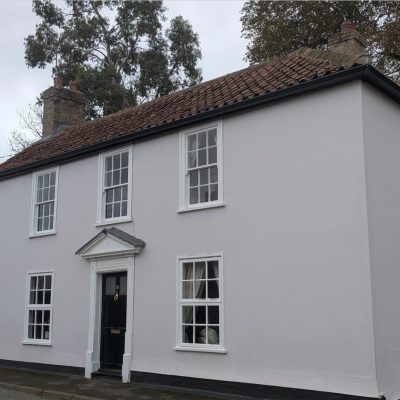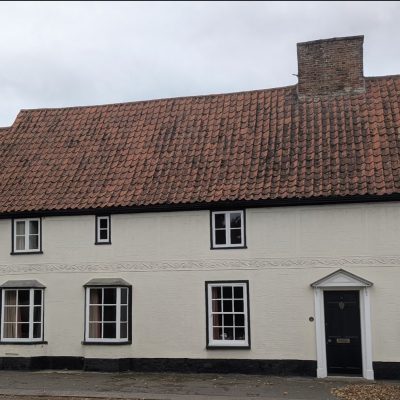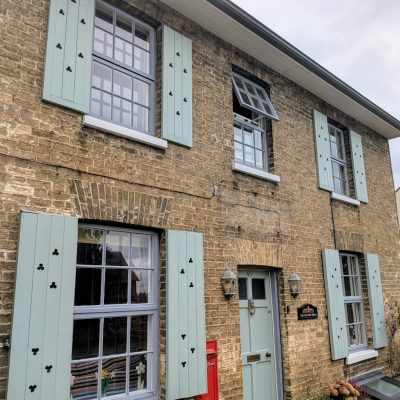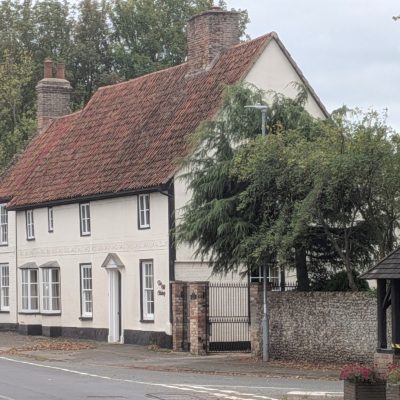Search by topic
- archaeology
- Building of Local Interest
- chapel
- charity
- church
- crime
- dressmaker
- fire
- Great Eastern Railway
- Listed building
- Mapping Relief
- medieval
- oral history
- poverty
- Public House
- Religious House
- Roman
- scholar
- school
- Then and Now
- tudor
- women
- work
- world war one
- world war two
Search by text
The School House, High Street, Chippenham
History of Old School House
Listed Building:
House, late C17, rebuilt c.1708 as a village school by Lord Orford, with medieval limestone and clunch foundations and basement walls. Local buff and red brick with red brick window and door jambs and quoins; limestone details … The clunch walls, possibly C13, with some re-used stone have two projecting corbels and possibly formed the foundations and basement walls to the Knights Hospitallers preceptory.
There were two small hospitals run by military orders within Cambridgeshire; Denny which catered for the Knights templar until the order was suppressed in 1309, and Chippenham, which belonged to the Knights Hospitallers.
The preceptory was founded in 1184 by William de Mandeville, Earl of Essex. The accommodation was substantial, being designed to cater not only for the Knights and their staff, but also for the sick from other houses, and visiting relatives and friends. The house was often used as a guest house by Henry III.
In 1311 the Preceptor, 2 knights and 2 chaplains lived here. There were 7 sick knights in the infirmary with 3 servants to look after them. There were 80 corrodians or lay servants belonging belonging to the Order.
The Old School house is believed to be on the site of the preceptory. There is also a 13th century tomb coping to the south-east of the church porch which may have come from one of the Knights’ tombs.
Contribute
Do you have any information about the people or places in this article? If so, then please let us know using the Contact page or by emailing capturingcambridge@
License
This work is licensed under CC BY-NC-SA 4.0











